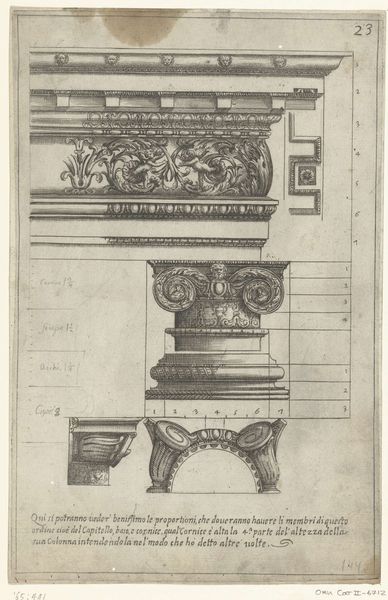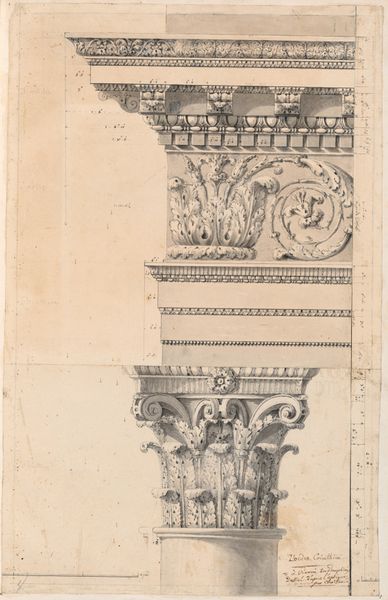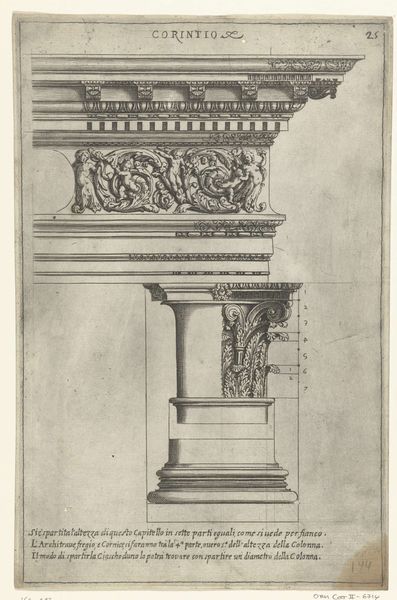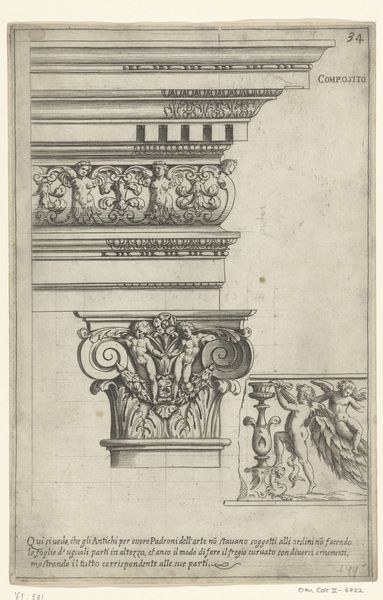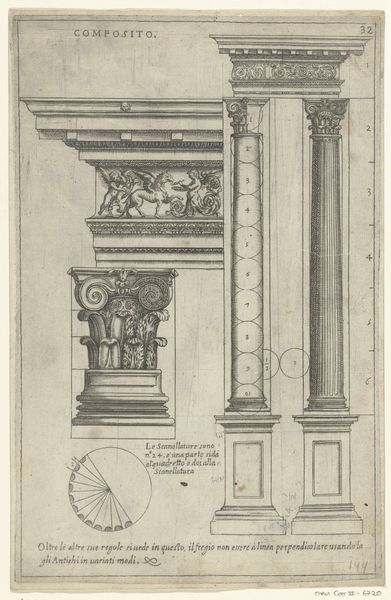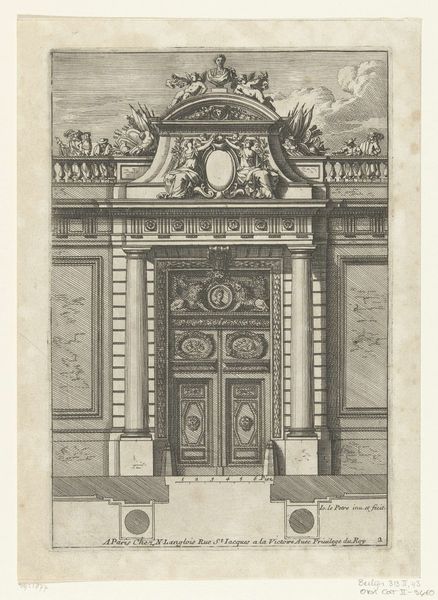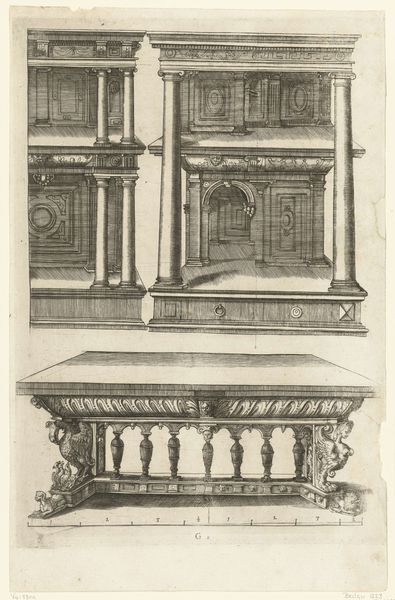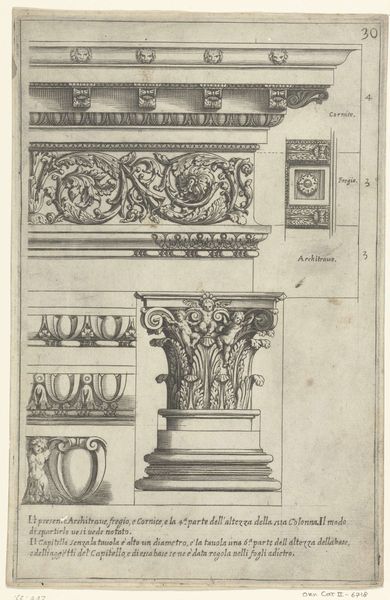
drawing, print, engraving, architecture
#
drawing
#
baroque
# print
#
form
#
geometric
#
line
#
engraving
#
architecture
Dimensions: height 280 mm, width 181 mm
Copyright: Rijks Museum: Open Domain
This is a drawing of an Ionic entablature and capital, created by an anonymous artist, and currently held in the Rijksmuseum. Though unsigned, the artistic style indicates that it was likely made during the Renaissance, a period defined by the rediscovery of classical forms. During the Renaissance, architectural drawings like this one were not just technical documents; they were artistic statements about power, knowledge, and cultural identity. Renaissance architects looked to the classical past for inspiration, which was viewed as a period of great intellectual and artistic achievement. These architectural elements evoke an idealized past, connecting those who used them to an imagined lineage of greatness. The image is an assertion of cultural identity, linking those who commissioned and created such structures to a historical narrative rooted in European classicism. It implies a sense of continuity with, and authority derived from, the past. The drawing, then, is not merely a depiction but a claim—a statement of cultural values and historical affiliations.
Comments
No comments
Be the first to comment and join the conversation on the ultimate creative platform.
